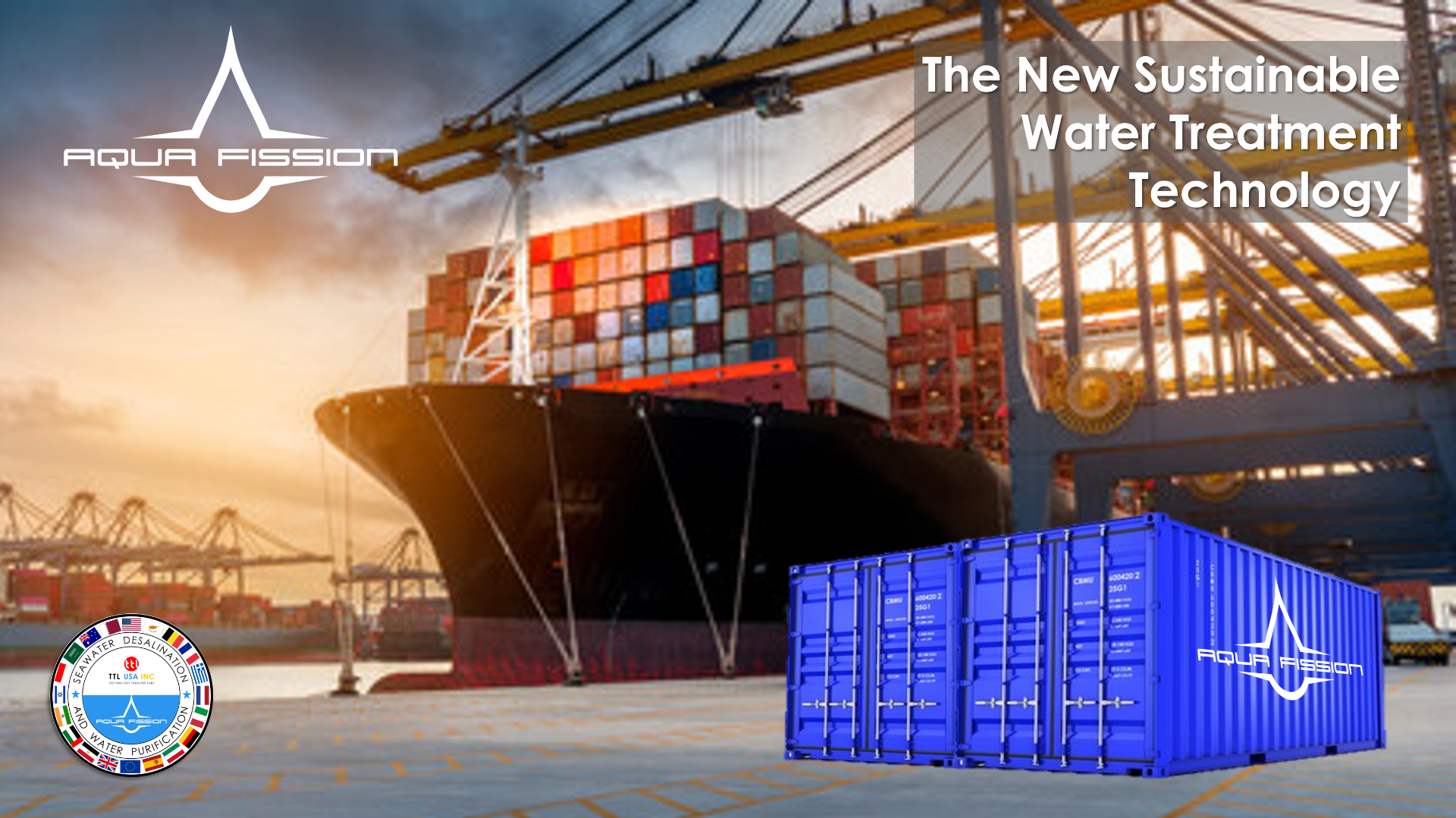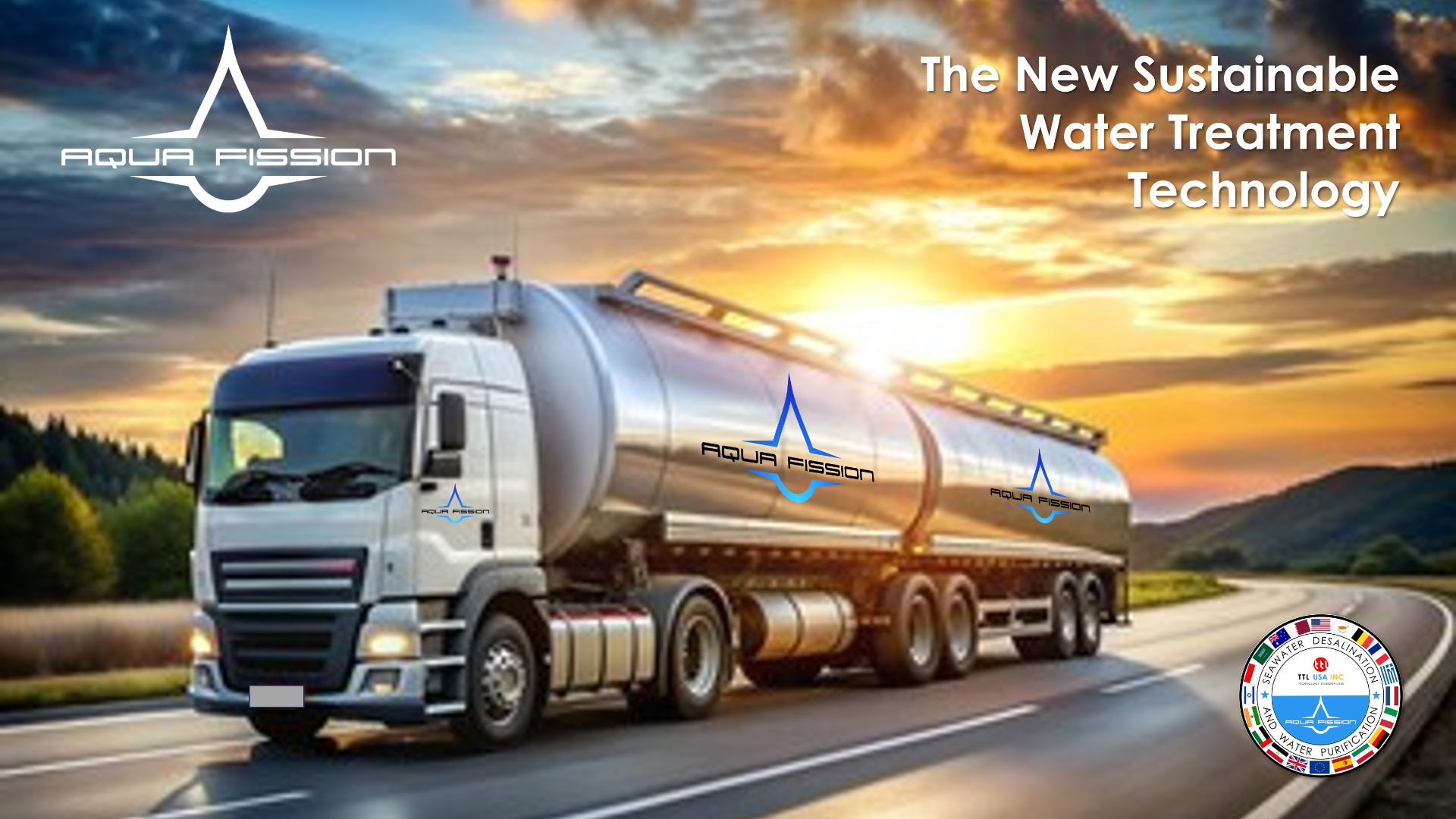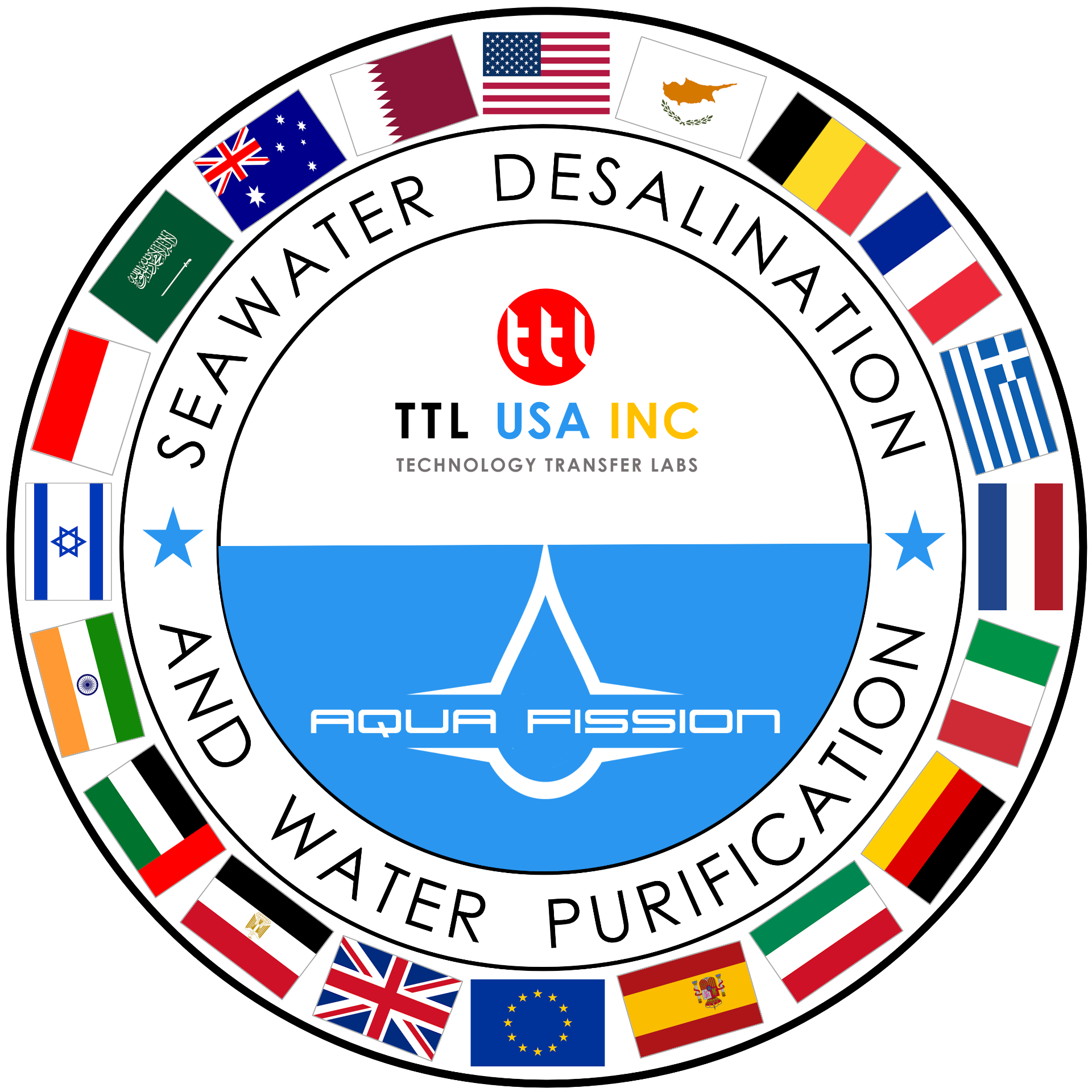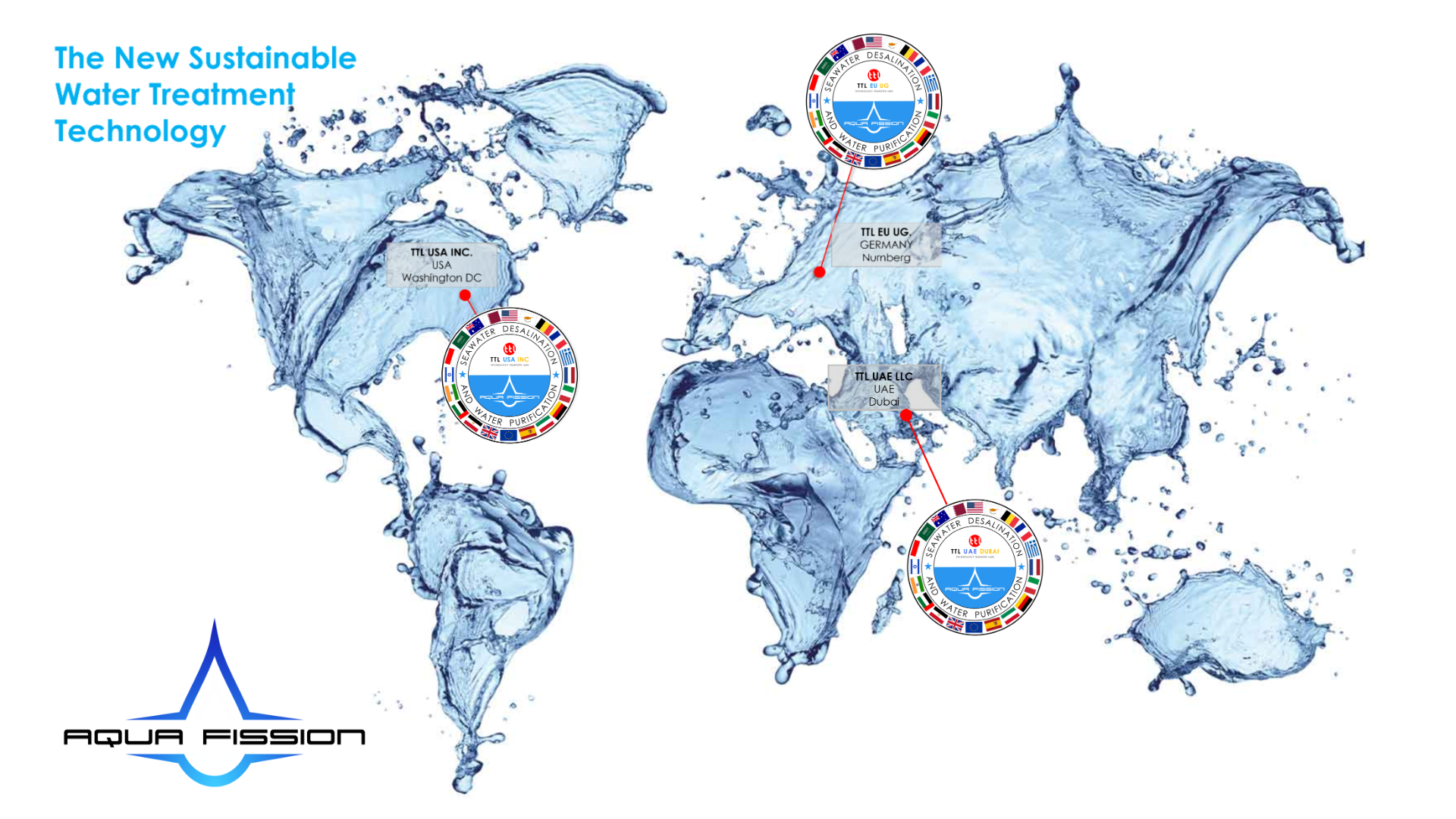Seawater Desalination

Seawater Desalination
Aqua Fission - Seawater Desalination Technology is a groundbreaking low-temperature technology
in the field of seawater desalination.
The Solution - Information for Consumers
More than just an alternative, Aqua Fission can be seamlessly integrated with existing high-capacity RO desalination systems. When used in tandem, it can treat the highly saline brine produced by RO plants, increasing overall water recovery efficiency by up to +90%.
The distinctive features of the technology,
compared to reverse osmosis, are the following:
- Unlike reverse osmosis, which produces about 50% of the waste in the form of brine discharged into the sea, Aqua Fission - Seawater Desalination Technology desalinates the entire volume of water taken from the sea. From 100 m³ of seawater, 100 tons of potable water and 4 tons of wet salt are obtained.
- Aqua Fission - Seawater Desalination Technology does not generate waste; i.e., it is environmentally friendly.
- Aqua Fission - Seawater Desalination Technology consumes 15 - 40 times less energy than reverse osmosis; i.e., net 0.3-0.5 kWh/t.
- Aqua Fission - Seawater Desalination Technology does not use any consumables - anodes or cathodes, inhibitors, chemical additives, filters, membranes, etc.
- Aqua Fission - Seawater Desalination Technology produces potable water of high consumer quality from seawater without the need for additional processing, including UV irradiation, fine cleaning, and additional mineralization. Water can be bottled immediately without additional treatment.
- Both investment and operating costs are 25-40% lower than those associated with reverse osmosis technology.
Aqua Fission - Seawater Desalination Technology units are installed in 40-foot containers with a
capacity of 100 tons per day, which are capable of operating completely
autonomously. Minimal maintenance staff is needed and daily maintenance is
not required, with the only requirement of selecting dry salt at a rate of
approximately 3.5 - 4 tons per installation per day


Aqua Fission - Seawater
Desalination Technology operates 365 days a year, without the need for additional generators
or components. Its productivity is increased by scaling up the number of
units used.
Thanks to its high degree of
autonomy, lack of dependence on consumables, and compatibility with
alternative energy sources, Aqua Fission - Seawater Desalination Technology
can be deployed in remote locations lacking essential infrastructure,
effectively replacing natural sources of potable water.
This technology is unparalleled globally, with no existing analogues.
The technology has been tested in many countries and received positive evaluations from water quality laboratories (including evaluation by the SGS laboratory).
If you are interested in the technology or have any questions, please contact us!


